Genre: Shooter Developer: Sega of Japan Publisher: Sega of Japan Players: 1 Released: 10/30/08
With a just over a decade elapsed, ladies and gentlemen I present to you Thunderforce VI.
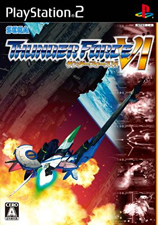 Such a rebirth was nothing short of miraculous for a fanbase that watched this shooter institution flicker out with Tecnosoft’s departure from gaming. The name lingered via tribute CDs, scraps of CG from a aborted DC project, and the indie monstrosity Broken Thunder, but a resurrection seemed dim, constrained market coupled with rising development costs had curbed more than a few shooter series in recent years (hello Darius). Enter Sega, with two gifts for grizzled shmup vets in ’08; a reinvented Fantasy Zone 2 and a proper Thunder Force sequel dropped with barely three months notice.
Such a rebirth was nothing short of miraculous for a fanbase that watched this shooter institution flicker out with Tecnosoft’s departure from gaming. The name lingered via tribute CDs, scraps of CG from a aborted DC project, and the indie monstrosity Broken Thunder, but a resurrection seemed dim, constrained market coupled with rising development costs had curbed more than a few shooter series in recent years (hello Darius). Enter Sega, with two gifts for grizzled shmup vets in ’08; a reinvented Fantasy Zone 2 and a proper Thunder Force sequel dropped with barely three months notice.
Thunder Force VI was directed by Tetsu Okada who dabbled on mini-shooters in past projects, namely Astro Boy GBA and Segagaga for Dreamcast. Okada’s first foray into the series, his crew opted not to stray from the formula that culminated into Thunder Force V. In a progressive step, all weapons are immediately available for use instead of collected via power-ups. These include twin shot, back shot, wave (TH3 version), hunter, and freeway; which despite attempts to tame is still nearly game breaking. The overweapon system from TFV carries over, now powered by orbs gathered from enemies and triggered in set blocks instead of at player discretion. A minor grievance though, is that the frequent slowdown that accompanies these flashy attacks is far more irksome. Your ship, the aptly named Phoenix, is a smart design; its cannon/radar array mimicking a lance and shield at ready and a suitable addition to Tecnosoft’s hangar. The time-tested Rynex and its own unique weapon set-up are among unlockables for completing the game.
To me, Thunder Force represents the perfect mesh of elements for a horizontal shooter. While other shmup staples are prone to a lull here and there, Thunder Force always delivered frantic pacing, multi-direction enemy barrages, and environmental havoc, all without leaving the player feeling outgunned. Towards this end, TF VI is successful in spots. Multi-layered backdrops punctuated with oversaturated color and glowing weapon fire give the game an energetic quality. Subtle changes in camera angles are a modest addition to break the monotony of left to right and add cinematic flair. These are, however, dulled by bouts of slowdown and flat and/or low poly background construction. It wouldn’t be a shock if the game sprang from a modified Dreamcast engine.
Click for larger images!
At its best Thunder Force VI is a furious scramble; standout moments include breaching a multi-layer tropical space station and a low orbit battle ending with atmospheric descent into an alien city. The overall level design is dragged down by the developer’s choice to revisit specific layouts from prior entries. The ocean stage from TF V for example returns virtually intact. With a slim six levels, it’s disappointing to encounter these flashbacks instead of completely new content, and unfortunately this trend spills over to other aspects.
It’s very clear that the developers were fans, but to ape every element of Tecnosoft’s flagship from intro CG to ending is insanely restrained logic. It’s entirely possible to embrace a shooter’s heritage and still make it a fitting product of the current technology. Gradius V celebrated the Core with a multitude of new forms to rip apart piece by incandescent piece. R-Type Final’s Bydo were eerily realized foes to rival the best of Hollywood sci-fi. Thunder Force VI simply applies 3D modeling to old enemies with the sloppiness of a petty check forger. Sega certainly had a healthy catalog from which to choose – Lightening Force alone had enough variation from level to level to design several titles from scratch. In TF VI, everything is tossed together with little reason and just looks bad. Bosses are retreads as well and worse for wear. Ms. Maiden and Sir Knight were far more imposing in their skeletal Saturn forms and the final boss seems better suited as a Tool album cover than the quaking engine of destruction you’d expect.
Whether it be techno, metal, or more jazzy fare Thunder Force has always been graced with scores that meld perfectly with on-screen action. Culled from several talented musicians, TF VI is a good arrangement disc but not necessarily a fitting soundtrack. A light techno-pop remix in a raging inferno level? The sound crew may have been better to confer with one another and play more of the game before heading to the studio. Voice work is surprisingly flat. It’s odd… the shrill little automaton voice from TF V never bugged me, and its panic tone seemed appropriate actually. The warnings and radio chatter in TF VI are delivered with little urgency and are just another small touch that seemed to escape attention.
Click for large images!
In all, Thunder Force VI is a decent game but a lackluster reboot to the series. That said, I’m not going to feebly shake my fist at Sega. Thunder Force has never been a commercial success – I believe Lightening Force was released to a blurb in Sega Visions and a $6 print ad budget (Midwest Auto Trader isn’t cheap ya know). This was made for fans by fans that were in error sanctioning their creative liberties. While this could be corrected in further episodes, perhaps it’s better to accept Thunder Force VI as a conclusion instead of risking a plunge into mediocrity.
To be continued?

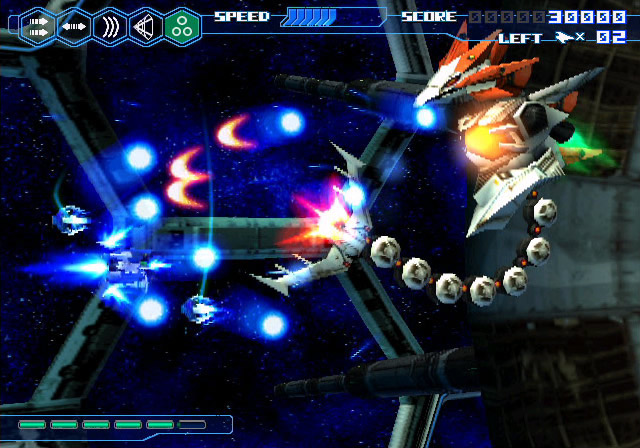
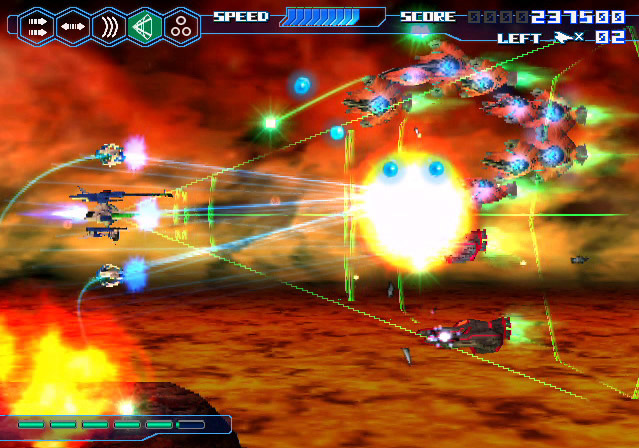
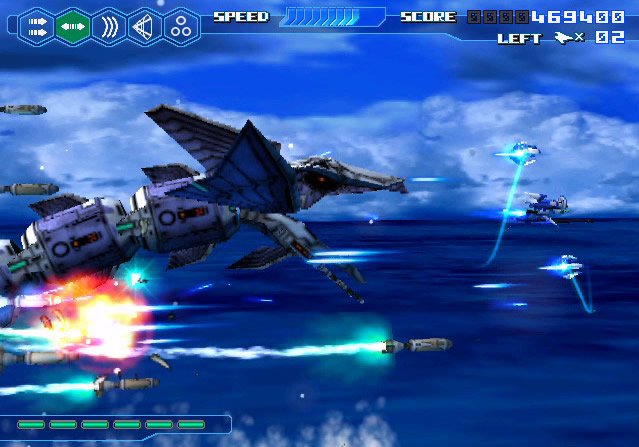
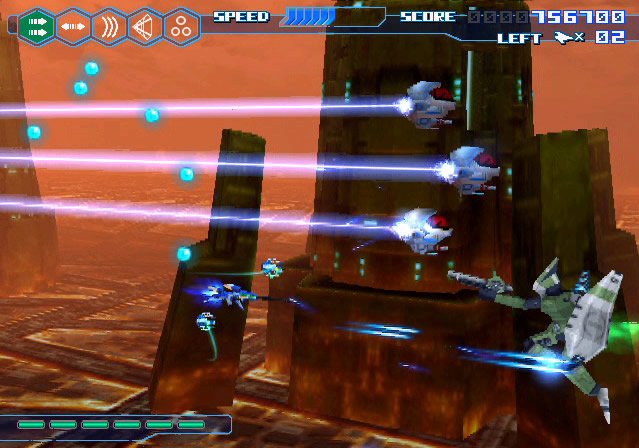

Recent Comments